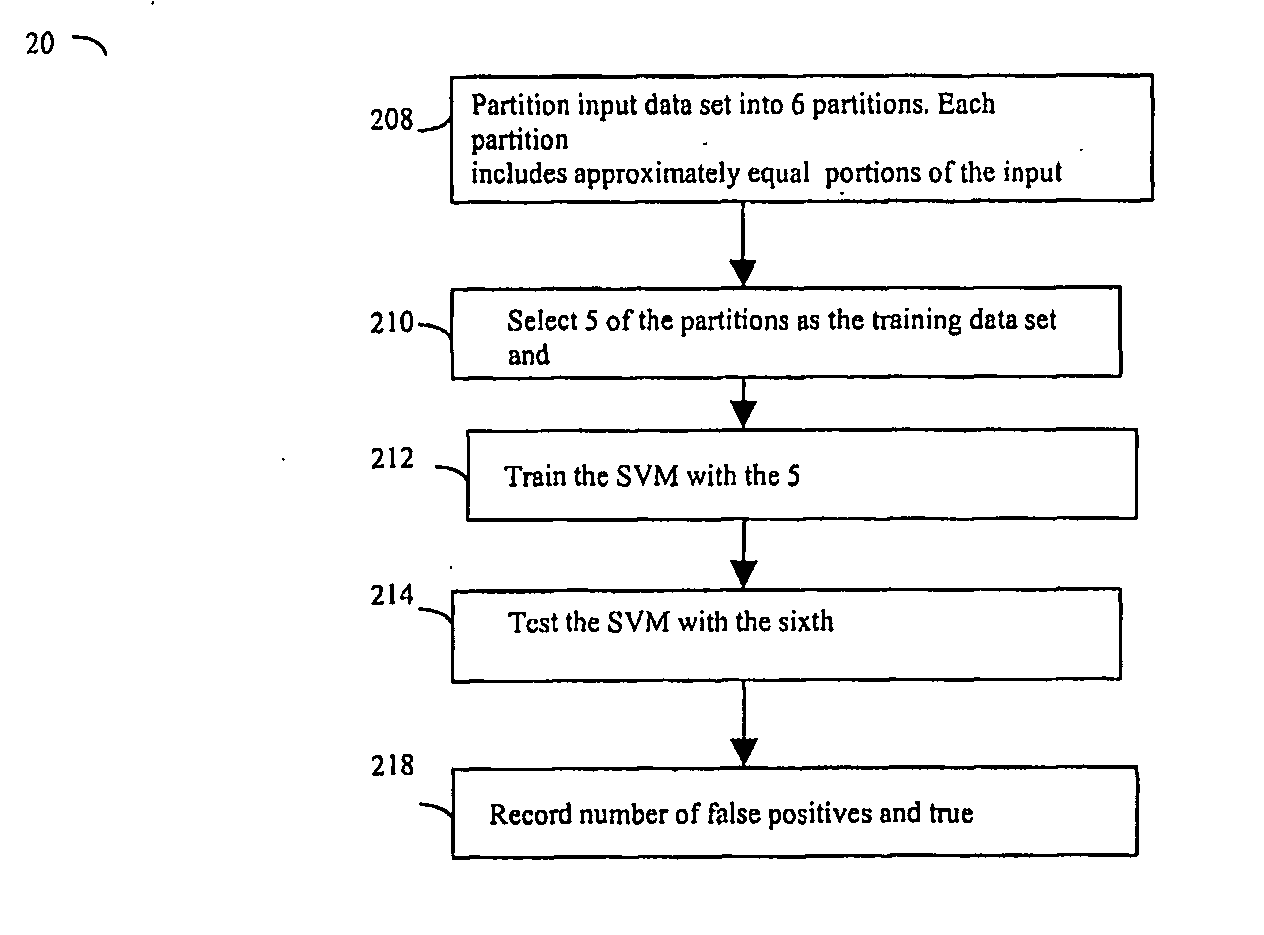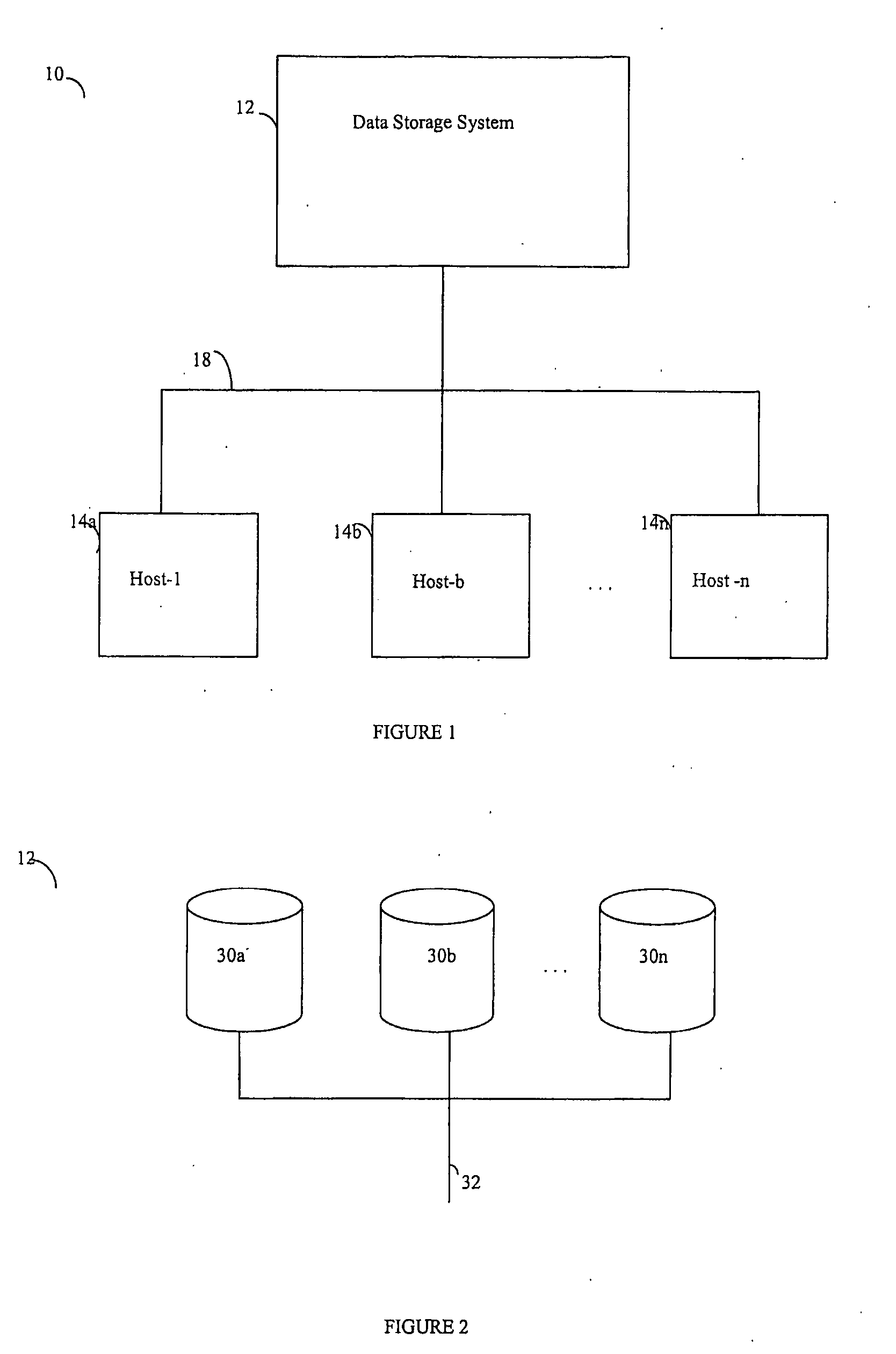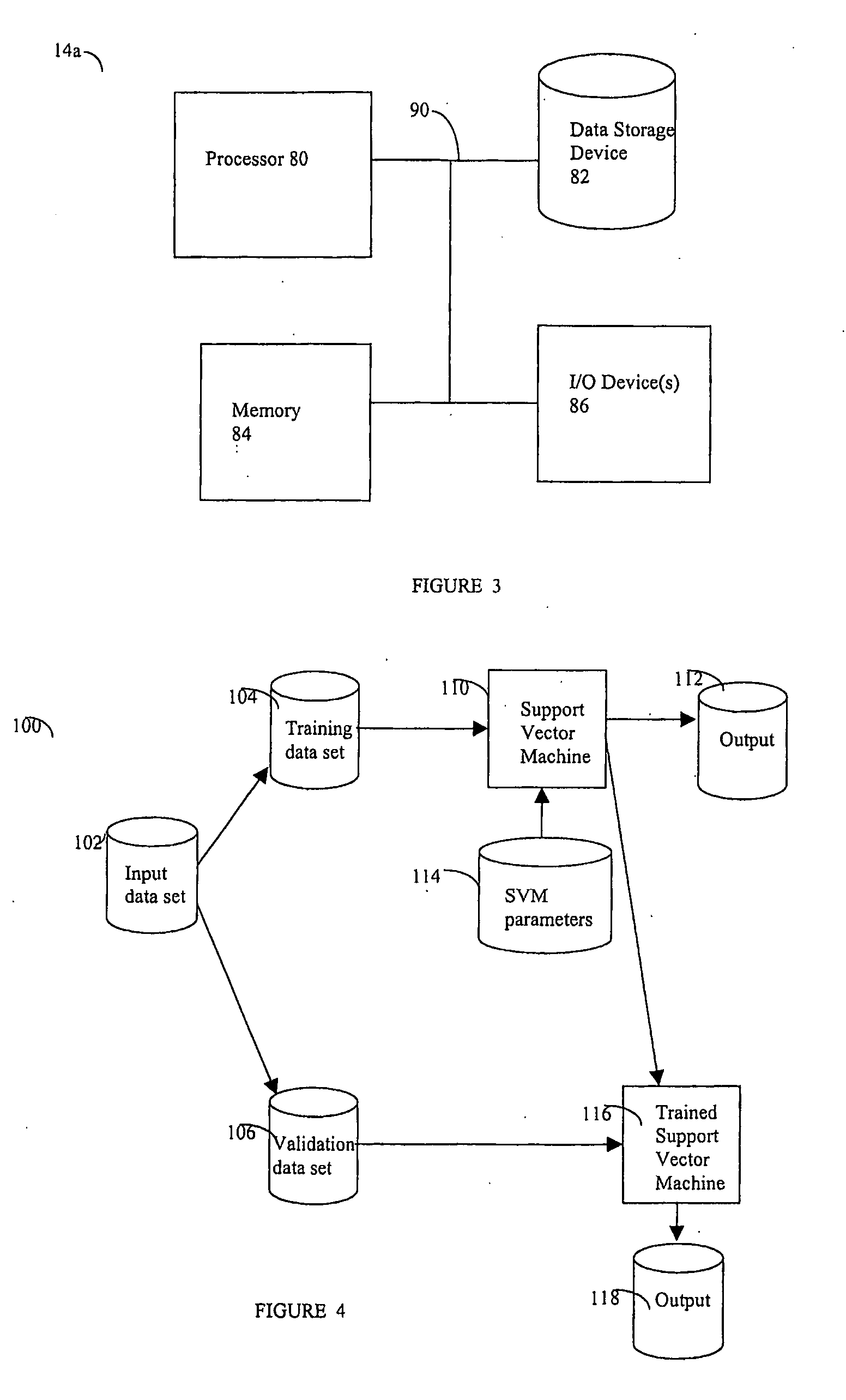Disease predictions
a technology of disease process and prediction method, applied in the field of disease prediction method, can solve the problems of patient's condition not improving even with proper treatment, increased risk of developing certain complications,
- Summary
- Abstract
- Description
- Claims
- Application Information
AI Technical Summary
Benefits of technology
Problems solved by technology
Method used
Image
Examples
second embodiment
[0123] Following are results obtained using the above second embodiment of the trained and validated SVM as recorded, for example, at during various iterations of step 218:
PREDICTED CLASSclass 1class 2AccuracyTRUEclass 1173587141399.19%CLASSclass 210605139511.62%
Overall accuracy 93.57%
[0124] The foregoing confusion matrix states that there are a total of 173587+1413=175000 instances of actual class 1 patients of which 1413 were falsely classified as belonging to class 2.
[0125] In a third example SVM embodiment, the following six difference parameters: cholesterol, chloride, LDL, total proteins, phosphate and calcium were selected. Selection of the foregoing parameters was determined using ANOVA, matrix plots and intuition.
[0126] The following internal SVM parameters were produced as a result of the SVM training and validation by executing the processing steps of flowchart 200 of FIG. 8 using the foregoing 10 difference parameters for the collected input data for the 187 patients:...
fourth embodiment
[0137] The following fourth table includes data for support vectors determined in the The table is organized similar to the other three tables of support vector data described herein in which there is one support vector associated with each row of the table. Columns 1-3 of each row include data for each support vector as described in connection with other tables. The remaining columns includes difference parameter data for each support vector.
AltPT-IDLagrangesCLK(SGPT)HBA1CCholClLDL00.566083−1−0.09999992−2.51−32−3.2−3710.111721−1−0.5−3−3.4−9−3.4−4.220.135129−1−0.4−70.4925−3.628.830.137064−1−0.8−70.54−47−1.3−13.840.0372113−1−0.3−2−0.34−22−2.8−19.860.101041−1−0.4−2−0.91−24−0.5−9.271.23142−10.099999914−0.05999954−0.5999988.880.122128−10.3−9−1.15−332.6−27.290.590357−10.430.5519−0.9000025110.142142−10.3−550.6212−0.90000214.8130.0732453−1−0.420.47−21−1.1−8.60001140.140047−10.8−6−0.8739−2.2−13.8150.0900951−1−0.2141.67230.8000036.39999160.368981−10.45−0.6621.43.6180.140893−10.54−1.393−1.14...
PUM
 Login to View More
Login to View More Abstract
Description
Claims
Application Information
 Login to View More
Login to View More - R&D
- Intellectual Property
- Life Sciences
- Materials
- Tech Scout
- Unparalleled Data Quality
- Higher Quality Content
- 60% Fewer Hallucinations
Browse by: Latest US Patents, China's latest patents, Technical Efficacy Thesaurus, Application Domain, Technology Topic, Popular Technical Reports.
© 2025 PatSnap. All rights reserved.Legal|Privacy policy|Modern Slavery Act Transparency Statement|Sitemap|About US| Contact US: help@patsnap.com



